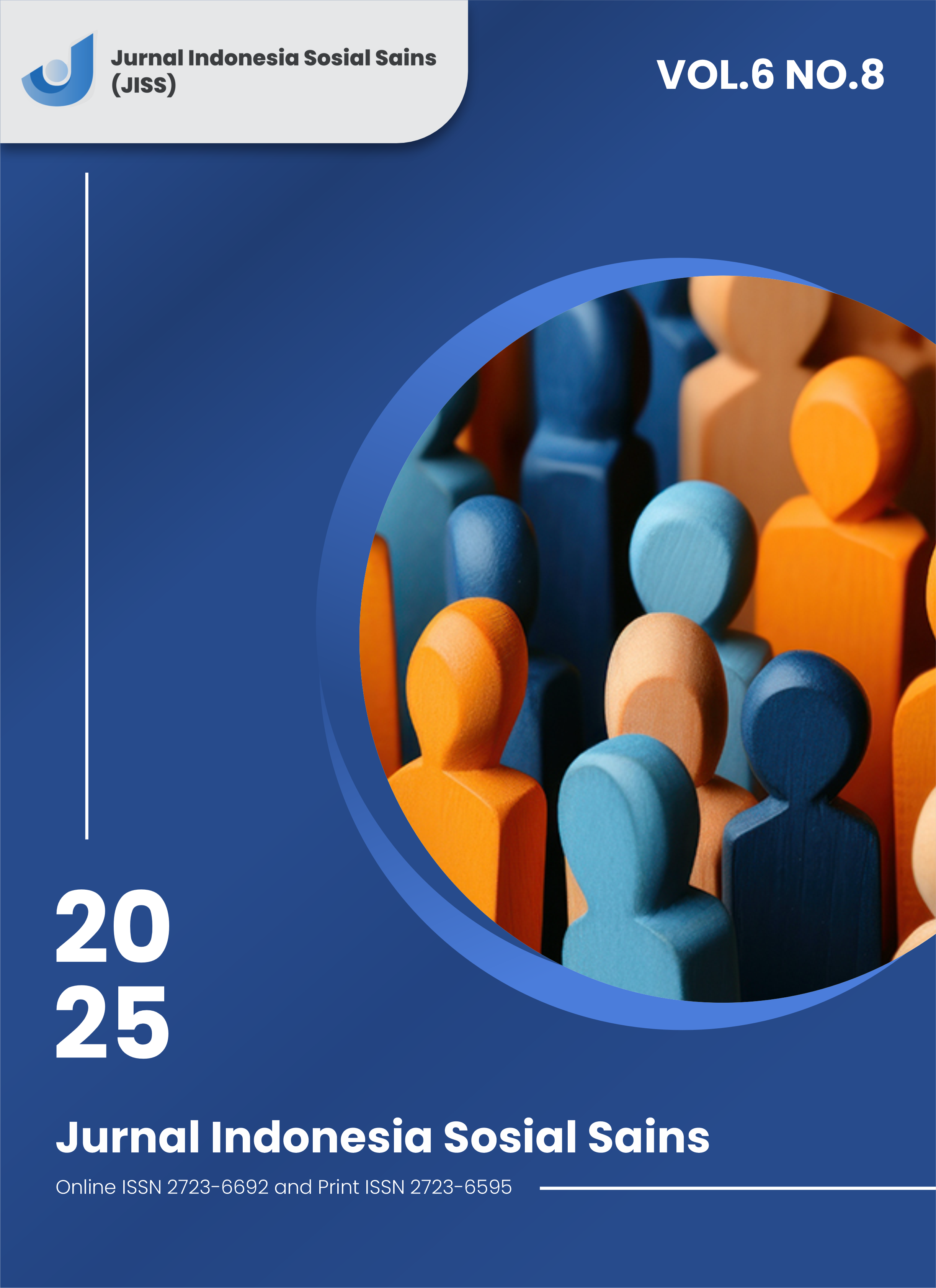Linguistic Phenomenon: Language Play Among Multilingual Communities on Social Media
DOI:
https://doi.org/10.59141/jiss.v6i8.1847Keywords:
Multilingual humor, Language play, Social media linguisticsAbstract
The rapid growth of social media has transformed communication patterns, particularly in multilingual societies where language play (e.g., puns, wordplay) thrives as a creative and humorous form of interaction. Indonesia, with its rich linguistic diversity, serves as an ideal context to study this phenomenon, as social media users frequently blend regional languages, Indonesian, and foreign languages (e.g., English, Korean) to produce engaging and culturally resonant content. Despite its prevalence, research on multilingual language play in digital spaces remains limited, particularly regarding its linguistic mechanisms and sociocultural functions. This research aims to fill this gap by examining the types, techniques, and communicative roles of language games in Indonesian multilingual communities on social media. Using qualitative analysis, this study examines humorous multilingual content from Instagram, TikTok, and YouTube. Through purposive sampling of 100 public examples, it categorizes linguistic techniques and communicative functions, employing thematic and discourse analysis to uncover underlying patterns. The findings show that interlingual puns dominate, primarily using homophony for humor. These serve four key functions: aesthetic (beauty), interpersonal (bonding), cognitive (critical thinking), and ideological (social critique). They demonstrate multilingual speakers’ adaptability in navigating diversity while fostering inclusivity. Such language play transcends entertainment, emerging as a sophisticated tool reinforcing cultural identity, social cohesion, and critical discourse. These findings have implications for sociolinguistic research, digital communication strategies, and language education, suggesting that humor and multilingual creativity can enhance cross-cultural understanding and pedagogical innovation. Future research could explore cross-cultural comparisons or the role of algorithms in shaping linguistic trends on social media.
References
Alexander, R. J. (2017). Wordplay and metalinguistic/metadiscursive reflection: Author's comments and translator's choices. In The dynamics of wordplay (pp. 25-52). De Gruyter. https://doi.org/10.1515/9783110477498-003
Akmal, S., et al. (2025). Social media for English language acquisition in Indonesian higher education: Constructivism and connectivism frameworks. ScienceDirect.
Cekaite, A., & Aronsson, K. (2014). Language play, a collaborative resource in children's L2 learning. Applied Linguistics, 26(2), 169-191. https://doi.org/10.1093/applin/amh024
Chen, L., & Wang, M. (2025). Code-switching in digital communication: A study of bilingual language use in popular platforms. ResearchGate.
Coulson, S., & Williams, R. F. (2019). Hemispheric asymmetries and joke comprehension. Neuropsychologia, 43(1), 128-141. https://doi.org/10.1016/j.neuropsychologia.2004.03.015
Davies, C. E. (2020). Ethnic humor around the world: A comparative analysis. Indiana University Press.
Dynel, M. (2018). Irony, deception and humour: Seeking the truth about overt and covert untruthfulness. De Gruyter Mouton. https://doi.org/10.1515/9781501506246
Ely, R., & McCabe, A. (2020). Language play, language learning. Oxford Review of Education, 20(1), 27-36. https://doi.org/10.1080/0305498940200103
Hay, J. (2020). Functions of humor in the conversations of men and women. Journal of Pragmatics, 23(6), 709-742. https://doi.org/10.1016/j.pragma.2019.12.008
Kaan, E., & Swaab, T. Y. (2015). The brain circuitry of syntactic comprehension. Trends in Cognitive Sciences, 6(8), 350-356. https://doi.org/10.1016/S1364-6613(02)01947-2
Kim, H., & Tanaka, Y. (2024). Code-switching used in Indonesian-Japanese interpersonal communication: A sociolinguistics study. ResearchGate.
Laineste, L., & Voolaid, P. (2016). Laughing across languages: Intertextuality of internet memes. European Journal of Humour Research, 4(4), 26-49. https://doi.org/10.7592/EJHR2016.4.4.laineste
Lebang, E. G. (2022). Code switching of the Indonesian-English found in selected professions' utterances in talk shows. KLASIKAL: Journal of Education, Language Teaching and Science.
Nababan, P. W. J. (2019). English, multilingualism and globalisation in Indonesia. English Today, 35(1). Cambridge University Press.
Pratama, R. (2024). Language contact phenomena: A case study of Indonesian-English code-switching in social media communication. Focus Journal: Language Review, 2(2).
Rahayu, S., & Putri, D. (2024). Contemporary translingual English language policy and practice in Indonesia. Taylor & Francis Online.
Sari, D. P., & Rahman, A. (2022). Multilingualism in social media: Indonesian K-Pop fans language choices on Twitter. ResearchGate.
Sari, M., & Wijaya, K. (2024). Code-switching and its stylistic effects in multilingual communities. ResearchGate.
Schnurr, S., & Zayts, O. (2017). Language, humour and identity in workplace interactions. Language & Communication, 54, 46-60. https://doi.org/10.1016/j.langcom.2016.10.013
Suryani, A., et al. (2018). Multilingualism and social networks among language speaking communities of Wondama Bay, Papua, Indonesia. ResearchGate.
Thompson, J., & Lee, S. (2024). Language and identity: Code-switching practices among multilingual communities. ResearchGate.
Downloads
Published
How to Cite
Issue
Section
License
Copyright (c) 2025 Nurul Ilmiasari, I Dewa Putu Wijana

This work is licensed under a Creative Commons Attribution-ShareAlike 4.0 International License.
Authors who publish with this journal agree to the following terms:
- Authors retain copyright and grant the journal right of first publication with the work simultaneously licensed under a Creative Commons Attribution-ShareAlike 4.0 International. that allows others to share the work with an acknowledgement of the work's authorship and initial publication in this journal.
- Authors are able to enter into separate, additional contractual arrangements for the non-exclusive distribution of the journal's published version of the work (e.g., post it to an institutional repository or publish it in a book), with an acknowledgement of its initial publication in this journal.
- Authors are permitted and encouraged to post their work online (e.g., in institutional repositories or on their website) prior to and during the submission process, as it can lead to productive exchanges, as well as earlier and greater citation of published work.












